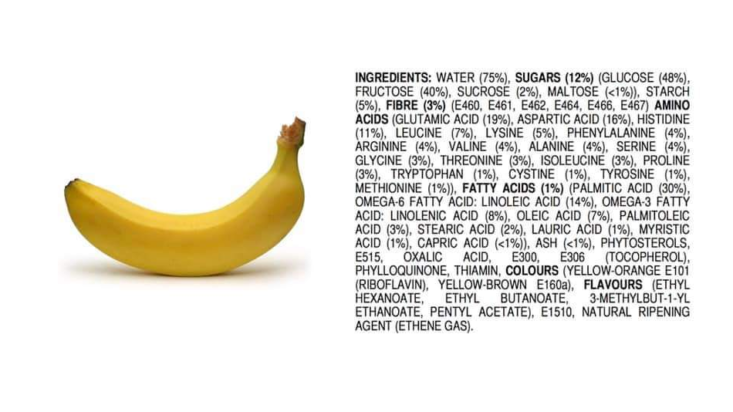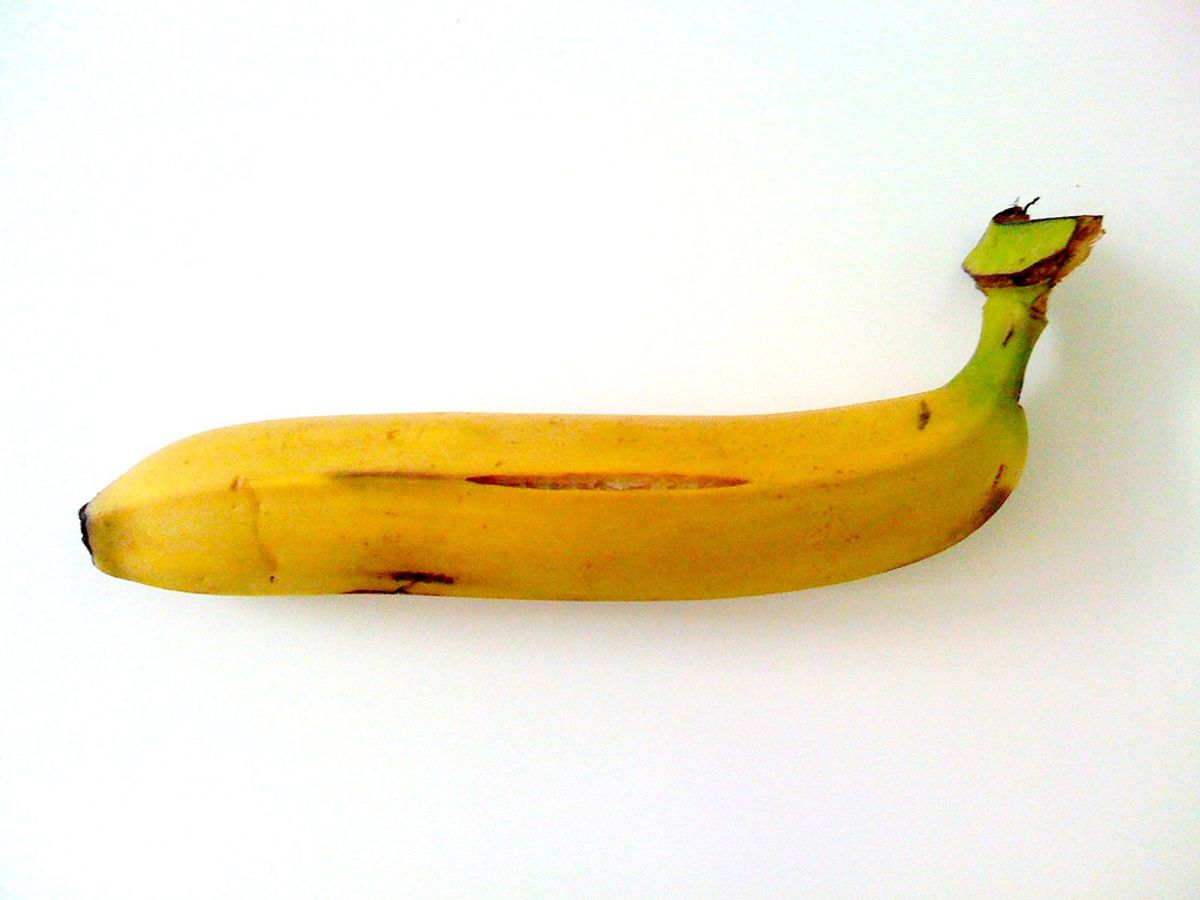Photographs of various fruits accompanied by long lists of chemicals crafted in the style of ingredients labels have been a fixture on the internet since at least 2013, when they were created by James Kennedy, a high school chemistry teacher in Melbourne, Australia. His take on the banana is especially popular:

This graphic is an accurate representation of the chemical constituents of your average banana, information that can be verified with the USDA Agricultural Research Database, which compiles studies into the nutritional and chemical content of various food items.
Part of what Kennedy was trying to convey with his illustration was that even completely natural foods, when described scientifically, can sound unnatural and potentially unhealthy, as reported in the New York Times:
As a high-school chemistry teacher, I made these posters for my students as a visual introduction to our organic chemistry course. I want to erode the fear that many people have of ‘chemicals’, and demonstrate that nature evolves compounds, mechanisms and structures far more complicated and unpredictable than anything we can produce in the lab.
This poster series breaks down all the major ingredients in popular natural foods — using E-numbers and IUPAC names instead of common names where they exist. Anthocynanins, for example, which are said to give blueberries their “superfood” status, are also known as E163.
If these ingredients are considered hierarchically, the banana sounds much more simple. Like all fruit, it contains water, sugars, starch, fiber, amino acids, fatty acids, minerals (i.e., ash), and chemicals that impart their coloring. Myriad names can be ascribed to the various different chemicals that fit these groups, and Kennedy used a variety of different nomenclatural methods to make that point.
The most common grouping of chemicals in the banana are sugars, and in this case the sugars are predominantly glucose and fructose, with lesser amounts of sucrose and maltose. After starch, a polysaccharide chemical found in abundance in plants, the next listed set of chemicals is fiber, another common group of carbohydrate chemicals.
Kennedy represented the fiber as a group of chemicals listed by their “E numbers”, which are codes assigned to substances permitted as food additives within the European Union. In reality, all of these chemicals are either cellulose (the most common chemical in plants) or various breakdown products of cellulose:
- E460 - Cellulose
- E461 - Methyl cellulose
- E462 - Ethyl cellulose
- E464 - Hydroxypropyl methylcellulose
- E466 - Carboxymethyl cellulose
- E467 - Ethylhydroxyethylcellulose
After the fiber, Kennedy listed amino acids, a group of simple chemicals ubiquitous to life on this planet. All the chemicals listed are present in bananas, according to the USDA. Fatty acids, the next group of chemicals, are similarly ubiquitous in nature, and all of those chemicals listed above are also found in bananas. Likewise, ash is another way of referring to the mineral content of a food item, and in this case Kennedy used a variety of different chemical-naming conventions to obscure the fact that each of them is commonly known by other names:
- Phytosterols - a group of plant-derived compounds related to cholesterol.
- E515 - Potassium sulfate
- Oxalic acid - common in plants
- E300 - ascorbic acid, also known a Vitamin C
- E306 (tocopherol) - Vitamin E
- Phylloquinone - Vitamin K1
- Thiamin - Vitamin B1
Similarly, the coloring agents -- all of which are natural -- might be better recognized by different names:
- Yellow-orange E101 (riboflavin) - Vitamin B2
- Yellow-brown E160a - beta-carotene, a precursor to Vitamin A
The remaining chemicals may sound intimidating, but they too are natural. E1510 is another name for ethanol, which forms naturally as fruit ferments. The final “natural ripening agent,” ethylene gas, might sound downright nefarious but actually represents a neat intersection of plant and food science. In nature, the gas is a plant hormone associated with aging that triggers the ripening process. In the food industry, the gas is used on industrial scales to ripen a variety of fruits and vegetables all at once.
In sum, this graphic accurately depicts the chemicals that comprise a banana, using a variety of tactics to make that completely natural food appear to be full of “chemicals” -- something originally created by a high school chemistry teacher as part of a lesson on chemophobia.

